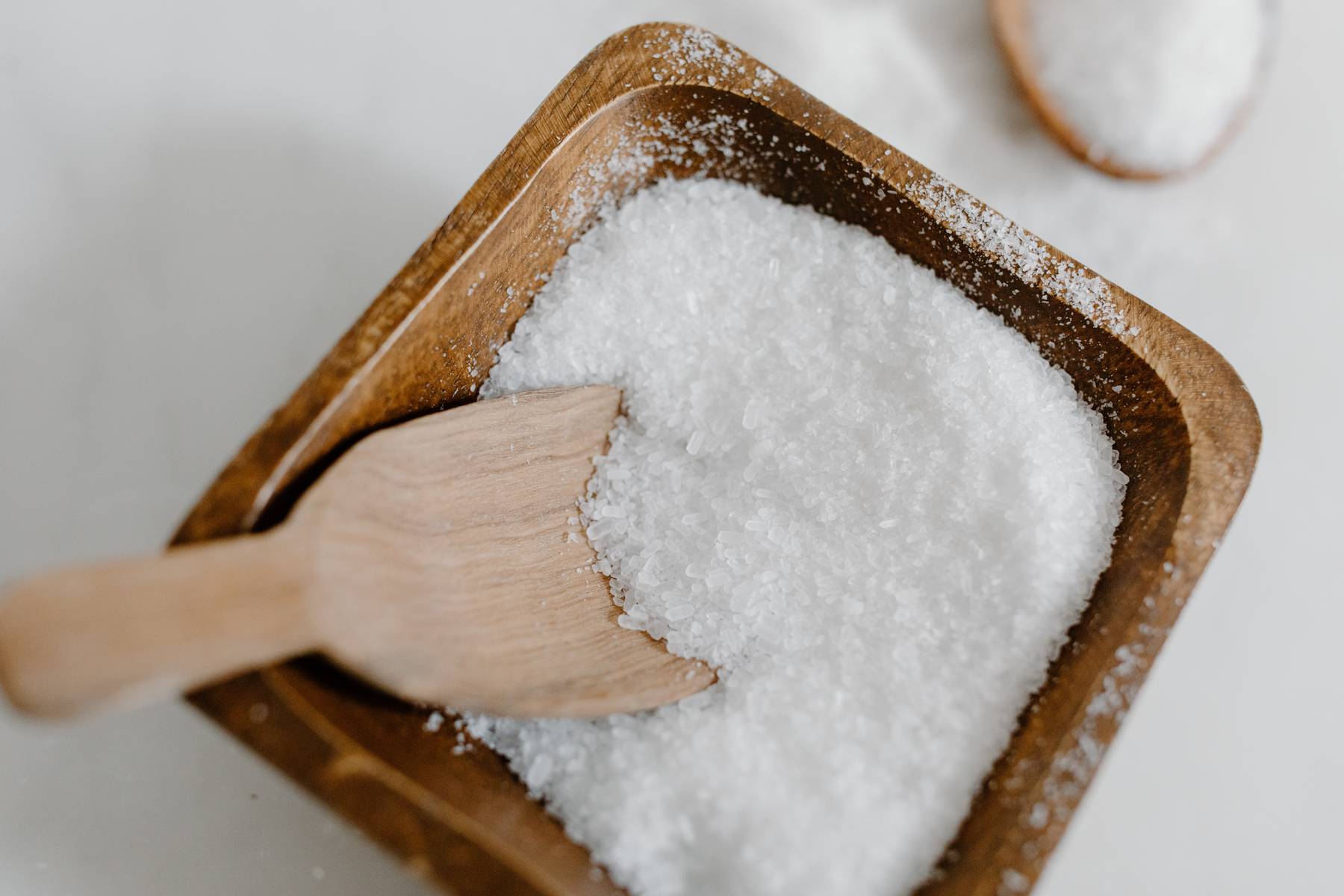
Friends of Erre4m good morning and welcome to this new post. Today we are talking about SALT.
There are many proverbs and anecdotes related to salt, but that's not all, there are also many words that are linked to this indispensable ingredient in the kitchen.
In this new post we will discover the importance not only in terms of taste, but also of the various roles salt plays in the dough and in the finished product.
Unleavened bread in the first place, as well as bread baked in central Italy are two classic examples of bread without salt; but after the information we will read in this post, we will be able to get an idea of the indispensability, without exaggeration, that this 'small' ingredient (in terms of dosage) has in the finished product.
The salt normally used in the preparation of bread is table salt chemically known as sodium chloride. Its quantity varies from 1.5% to 2.5% depending on the type of product being prepared and the type of flour being used. Nevertheless, the amount most commonly used is 2%, although in recent years bakers' associations have recommended lowering this to 1.5% due to the many cases of hypertension found in the population.

The inclusion of a small amount (0.5%) of salt in the dough strongly stimulates yeast fermentation activity, because it neutralises the toxic metabolites present in the yeast itself. A quantity of more than 0.5% salt, on the other hand, slows down the development of yeast cells.
If salt comes into direct contact with the yeast, it turns into a ruthless killer, producing what in scientific terms is called plasmolysis (the saccharomyces cell is destroyed by the pressure of the salt, which has a higher molecular weight than that of the yeast). This phenomenon can be easily demonstrated by directly adding salt to pieces of yeast, after a few minutes, water will come out of the yeast, it is a sign that the salt has broken the saccharomyces cell membrane. Therefore, the yeast and salt should never be included in the dough ingredients at the same time; normally the salt is added after a few minutes from the start of the dough (5-7), or you can opt to reverse the operation, leaving the yeast as the last ingredient to be added.

In addition, salt has a disinfecting effect on the dough because it blocks the development and metabolic activity of microorganisms. This disinfectant effect is highly positive as it partially inhibits the bacteria and pathogens responsible for the deterioration of bread and the growth of moulds; in addition, it partially inactivates the fermentative activity of lactic and acetic bacteria that would tend to increase the acidity of the dough resulting in an overly marked taste and smell.
Therefore, due to its ability to inactivate microorganisms, salt would not be indicated in pre-doughs such as biga or poolish, where instead there must be a development of the microflora of yeasts and lactic acid bacteria; unless, as explained in previous posts, it is necessary to slow down fermentation in the heat of summer.
Salt also affects enzyme activity, slowing it down in general. In particular, it acts on proteases, i.e. those enzymes responsible for the proteolysis reaction, i.e. the breakdown of the flour proteins (gliadins and glutenins in primis) that form gluten. As a consequence of proteolysis, the dough softens. On the other hand, thanks to salt and its hygroscopicity, i.e. its ability to absorb water, the dough will be more elastic and less sticky. This improvement in the characteristics of the dough results in better manoeuvrability of the dough during shaping, whereas a dough without salt will be stickier and more difficult to work. Salt acts, as mentioned above, positively on the gluten, making the gluten mesh stronger and more resistant. By adding salt after 5-7 minutes from the start of the kneading phase, and at the same time increasing the speed of the kneading machine, one can visually notice an improvement in the consistency and elasticity of the dough. An excessive amount of salt in the dough will make the gluten mesh too rigid and resistant, slowing down fermentation and worsening the quality of both the dough and the product, thus limiting its development.

When added to the dough in moderate quantities, salt has a positive effect on the characteristics of the finished product, giving it the right volume, making it soft, fragrant and with the right colouring of the crust.
Bread made from a dough to which salt has mistakenly or deliberately not been added will, in addition to being insipid, have a tendency to be flat and enlarged in shape, a low volume and an excessively pale crust. This shape is the result of the limited qualities of the dough (stickiness and glutinosity), while the light crust is the cause of excessive fermentation; the lack of salt slows down the activity of the yeast, the fermentation of the dough is too fast and excessively consumes the sugars necessary for its colouring.
In conclusion, it can be seen that salt plays a central role in the entire preparation of bread and in general of all leavened products, including sweet ones, from the kneading phase, through the shaping and fermentation-living phase, to the final baking and preservation of the product. Those who have had the opportunity to taste and consume the breads of central Italy, which tend to be suited to salty foods such as sausages, meat dishes and soups, will in any case not have been able to fail to notice all the characteristics listed above that those types of breads have: a very light crust, crumb that tends to crumble, an enlarged shape and a rather short cooling time.
Moderately, then, but always salt!
Blog by Enrico Gumirato pastry chef and trainer


